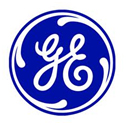This article was originally posted in the March 2012 Postdoc Journal Newsletter.
We interviewed one of the Industry representatives after the 2011 Postdoctoral Symposium and Career Fair about how postdocs should frame their science during such events. Here’s what he had to say.
 Job T. Rijssenbeek is a senior chemist in the Chemical Energy Systems Laboratory at the GE Global Research Center, in Niskayuna, New York. The facility is the headquarters and the largest of General Electric Company’s (GE) research centers that develop next generation technology. Before GE, Job performed research at Argonne’s Advanced Photon Source while he was a graduate student at Northwestern University working towards his Ph.D. in Inorganic Chemistry. During this period, he developed a deep appreciation for the unique capabilities Argonne offers along with other U.S. Department of Energy laboratories.
Job T. Rijssenbeek is a senior chemist in the Chemical Energy Systems Laboratory at the GE Global Research Center, in Niskayuna, New York. The facility is the headquarters and the largest of General Electric Company’s (GE) research centers that develop next generation technology. Before GE, Job performed research at Argonne’s Advanced Photon Source while he was a graduate student at Northwestern University working towards his Ph.D. in Inorganic Chemistry. During this period, he developed a deep appreciation for the unique capabilities Argonne offers along with other U.S. Department of Energy laboratories.
Recently Job returned to Argonne as a GE representative during the 2011Postdoc Symposium and Career Fair. He was struck by the breadth of the expertise amongst the attendees. “It was a real pleasure to talk with so many talented people and learn a little about what they are working on,” said Job. “Such an atmosphere brings a feeling of excitement and great possibility.”
Job was on the lookout for good problem-solvers at the symposium. As he manned the GE booth he was particularly looking for those researchers with expertise that could be broadly applicable. GE projects have life spans from months to a few years. This means GE constantly searches for new talent, looking beyond today’s pressing needs when they hire.
As an industry representative and a former academic researcher, Job is in an interesting position to reflect on working for industry and academia. He has found that researchers interested in careers in industrial research should prepare themselves for an environment where flexibility, the ability to prioritize and communicate ideas is as important as deep technical expertise. “Academic researchers tend to focus on the research ‘journey’ whereas industrial researchers focus on the research ‘destination,’” observed Job.
In academia the purpose of research is to increase knowledge thus the “journey” is what is exciting and what is reported. In industry, the focus is on solving a particular problem — the destination. One of the biggest constraints for industrial researchers is cost. Cost is calculated at the product level, and thus often requires system-level thinking to fully appreciate. This difference in emphasis and the addition of cost are important for applicants to be aware of when they present their work to an industrial audience.
Job’s advice for postdocs looking to start a career in industry is two-fold: know clearly what it is you want to communicate and understand your audience and what motivates them. “At a career fair, know what it is that you want the audience to take away about you. Make sure the audience can see that in your presentation,” says Job. He suggests highlighting the top two to four major scientific accomplishments or qualities you possess. Those first few minutes have to communicate quite a bit, in a clear fashion, and be memorable.
A presentation to an industrial audience should address the following questions, advises Job:
- What was the goal and why is it important?
- What is the result and did it achieve the goal?
- How was the problem solved?
- If the problem was not solved, does the approach remain worthwhile?
- What other approaches should be considered?
“I think the key is to start at a high level when thinking about a problem,” says Job. “Understand the system and the context around the component that you will work on. Sometimes this means understanding global socioeconomic trends and specific material compatibilities. The researcher needs to understand and define what ‘high level’ is for them.” Job also points out that nothing is wrong with understanding that initial assumptions were incorrect.
Finally, he advises postdocs to talk directly to industrial scientists, at conferences or career fairs, about their thought process and to ask them to critique your work. “You may not get much information about their current project, but you will learn a lot about their way of thinking,” notes Job.
Job T. Rijssenbeek has been at the GE Global Research Center for 10 years. During this time he has worked on energy storage technologies such as solid-state hydrogen storage, thermo-chemical energy recovery and sodium metal halide batteries. He currently is a project leader within GE’s sodium metal halide (NaMx) battery program. His team is focused on understanding the microstructural evolution of the cathode as a function of battery use and how that relates to performance. From this understanding, the team is looking to develop the next generation of the NaMx battery.

